Clean Green Energy
As the wind scours across the Rocky Mountain Front and the sun shines down onto the Big Sky’s open country, Montanans are developing ways to capture the energy resources that flow freely through the state.
Montana has more potential for renewable energy from existing and untapped sources than any state in the nation, including wind generation, solar power, hydro, ethanol and bio-diesel.
But where do we start? While Governor Brian Schweitzer spends his time focusing on Montana’s role nationally and developing our statewide goals, it’s just as important for each resident to take into consideration energy efficiency and what resources might lie in their own backyard.
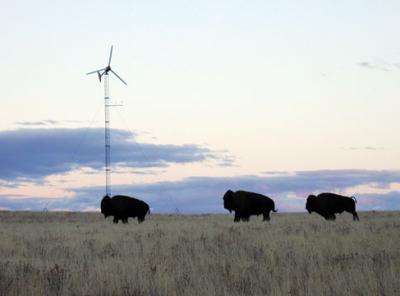
Montana, along with many other western states, is revving up to require that by 2015, 15 percent of its energy gridscape will be based on renewable energy.
By adopting the Mayors’ Climate Protection Agreement, Billings, Missoula, and Bozeman have taken steps to set benchmarks for 2015. Part of the plan is to retrofit city facilities with energy efficient lighting, urge employees to conserve energy and save money, and purchase only Energy Star equipment and appliances for City use.
Governor Schweitzer sees Montana playing a leadership role in reducing our nation’s dependency on foreign oil. And he illustrates this with his energy policy based on developing “clean and green” energy for Montana and national market demands.
Montana citizens have shown they want energy development based on renewable energy sources and clean technologies. In a poll conduced in September 2006 by the Montana Conservation Voters Education Fund (MCVEF), it was discovered that 68 percent would prefer the development of renewable energy, including wind, solar and biofuels while 28 percent would focus on clean coal technologies.
“Montanans are giving a clear and unambiguous message that they want our policy makers to focus on reliable, affordable energy, coming from renewable sources and efficiencies,” said Theresa Keaveny, Executive Director of MCVEF.
An economic factor supports Governor Schweitzer’s push for energy development. The locations for energy developments will assist in revitalizing areas of Montana that have suffered economic hardship.
Governor Schweitzer describes Montana as currently a “Cowboy Boot Economy,” in which most of the economic success currently extends through Kalispell, Missoula, Helena, Bozeman and Billings, creating a cowboy boot-shaped island of prosperity. Outside the boot lies not only economic dislocation, but also the highest potential for energy development.
The Pacific Northwest, the Southwest, and California will be facing a significant increase in energy consumption and needing to import energy across state borders. This means Montana can take steps in providing the needed energy.
But California, for example, legally demands that any electrical power imported into the state must meet standards of greatly reduced emissions and include 33 percent green power in the imported portfolio mix by 2020. Hence it is in Montana’s best interest to create more “clean and green” sources of energy.
WIND – SEEING GOLD IN THE MOVING AIR
Wind, one of the most free flowing elements, is becoming a necessity in our energy-hungry nation. Wind is a fuel-free resource, taking no oil to capture, giving it a fixed price on the grid.
This energy-spinning resource consistently and readily blows through Montana. Currently, Montana ranks fifth in the nation for its wind energy potential, behind North Dakota, Texas, South Dakota, and Kansas.
One of the reasons that Montana may be slow in getting renewable energy resources developed is that Montana has been based on non-renewable resources for so long. “Traditionally, Montana has gotten power from coal, which is cheaper, so wind power costs look outrageous in price,” said Kathy Belyeu, Manager of Industry Information for the American Wind Energy Association. “But the cost of coal is going up and the cost of wind is going down, so the price-point lines are starting to cross.”
There are currently four major wind energy developments in Montana. These projects are located at Judith Gap and Horseshoe Bend, on the Blackfeet Reservation, and on the Martinsdale Hutterite Colony, ranking Montana 19th in the nation for operating wind energy projects.
More projects will be on the map in the next few years—at Fort Peck Community College in the Glasgow area and in the Madison River Valley area—where landowners consider the wind more of a “cost” of doing business than an “asset.”
“It’s an emission-free source of electricity, with no pollutants and doesn’t contribute to climate change,” said Belyeu. “And where the wind blows is in traditionally rural areas where money for lease payments for turbines is particularly welcome.”
A few years ago, Northwest Sustainable Energy for Economic Development (SEED) developed a pioneering program, “Our Wind Co-op,” for rural residents of Montana and Washington to develop clean electricity by providing them with small wind turbines, which can be the lowest cost source of clean electricity for rural America.
“I really like small wind turbine technology,” reports Doug Nelson, who owns a 700-acre ranch located on the Blackfeet Reservation just a few miles east of Glacier National Park. “It’s nice to generate electricity without making our air quality worse.”
Nelson is not only concerned about the environment. Pocketbook issues played an even larger role in his decision to farm the wind. “My electric bill is quite high. The main reason for installing the small wind turbine was to reduce my monthly electric costs and to have the machine paid off in less than five years.”
Nelson did most of the installation work involved with his 10 kw machine placed atop a 60-foot tower. “It was really quite fun putting the wind turbine up and then to produce my own power,” he acknowledged.
SUN – TURNING SOLAR RAYS INTO LIGHT BULBS
Two of the largest solar panel systems in Montana can be found within miles of each other on Main Street of Bozeman.
The new LEED-certified Bozeman Public Library (16.7 kw) hosts one. The other is one of the many fast food locations, Arby’s Restaurant (15.1 kw). The Gallatin Valley currently has 200 kw of installed solar panels among different businesses and residential homes, giving Bozeman the highest concentration of solar panel systems installed, wired, and working in the state.
“We have a better economy then other places in the state that can accommodate solar consumption,” said Conor Darby, general manager of Independent Power Systems (IPS), which installed the Library, Arby’s, and multiple residential systems.
The $113,000 system on Arby’s accounts for only 25 percent of the power needs of the coolers and appliances, which was completed in November ’06. But it’s estimated that the system will pay for itself within nine years.
Currently, IPS is overwhelmed with designing, selling and installing solar panel systems in both the Gallatin Valley and around the state. They quadrupled their sales last year and they went from three employees in 2003 to 12 employees in two offices in 2006.
Darby says demand far exceeds the funding, the tax credit, and rebates in Montana. “Its much more aggressive in California, New Jersey, Colorado, and Florida,” he said. “People are getting more than half their system cost paid for the government and government mandates in those states.”
NorthWestern Energy says an average home uses 750 kilowatt hours (kwhrs) per month of energy.
The average Bozeman home system is 2 kwhrs, which is capable of producing a yearly average of 230 kwhrs per month or about a third of what people use for a home. The reason for this size system is it’s usually what homeowners can afford to invest in, said Darby. Bozeman is north of the 45th parallel; hence the solar panel’s production level is lower then if they were placed closer to the equator due to more direct sun hours.
“There are just as many people who want solar in Montana as there is in any other state, that’s for sure,” said Darby. Investing and implementing solar panels into an urban residential building is a simple and highly effective way to become more clean and green.
ULTRA-CLEAN COAL TECHNOLOGY
Perhaps at the top of Montana’s energy agenda is the development of ultra-clean coal technology. Synthetic fuel, also known as Synfuel or Fischer-Tropsch liquids, is fuel similar to diesel that is made from coal instead of oil. The technology gasifies rather than ignites the coal, converting a portion of the synthetic gas into barrels of diesel fuel and using the rest of the syn-gas to produce clean electricity. These are clean burning, high performing fuels that run in existing engines.
The process dates back decades when the Nazi’s first developed it during WW II since no one would provide them gasoline for cars and planes. South Africa used this method during apartheid also when no one would supply oil, and continues to make 200,000 barrels of Synfuels per day.
In May 2005, Governor Schweitzer met with Theodore Barna, an assistant deputy undersecretary of defense, to discuss the federal government’s plan to encourage the manufacture of various clean-coal technologies to be used by the Department of Defense. This falls in line with Schweitzer’s strategy to reduce American dependence on foreign oil, create a domestic energy economy while minimizing environmental damage and problems. But it has only been recently that the price points for developing the coal-gasification plants have crossed paths with the price of foreign oil.
The state of Montana currently owns 120 billion tons of coal in the ground, which in liquid fuel terms, is the equivalent of one-quarter of the oil in the entire Middle East.
“The benefits to our state would be tremendous...Even by developing a fraction of these reserves, we can create jobs, bring much-needed economic development to eastern Montana, and produce ultra-clean fuel to distribute around the west,” wrote Schweitzer.
ENERGY EFFICIENCY AT HOME
Wise energy use is a collection of habits and equipment that each individual needs to be responsible for. But despite popular belief, being energy efficient doesn’t mean design and fashion needs to be compromised.
Jim and Julie Betty wanted to build a home that was architecturally beautiful as well as energy efficient, although most of the time those wishes are mutually exclusive. Their home is completely Energy Star compliant, and, in fact, is 27 percent more energy efficient over the required ratings based upon air movement and thermal protection, lighting, electrical, and appliances.
Situated in the South Hills in Missoula, the large windows breathe the views and light into the home. It’s over 5,000 sq. feet, with integrated timber frames and complemented by a remarkable home entertainment theater.
“Designing for how you use your space and home is energy efficient design,” said Jason DeCunzo, owner of RiverHaus Fine Home Theater and Design Studio, who designed and implemented all the Energy Star lighting. The home heats itself with two electric fireplaces monitored by a control system.
The structure of the home was built from Structural Insulated Panels (SIPs), which provide sound walls without the multiple studs and nails that conduct energy outside. Although the SIPs may be 15 percent more expensive then wood studs, the pre-built walls and roof panels take only two weeks to erect as compared to one month to frame.
“If you start the process of design with energy efficient goals, you will end up with the results you want,” said DeCunzo. “And all for a comparable price.” Energy-efficient design is not a black hole investment; it’s just a plain smart way of looking ahead.



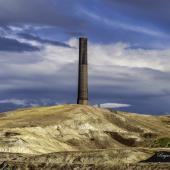

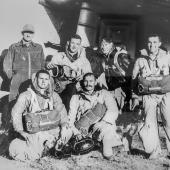

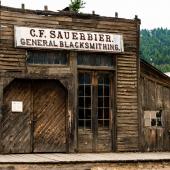
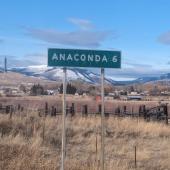
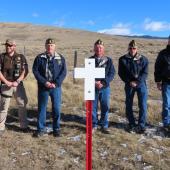

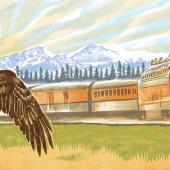
Leave a Comment Here